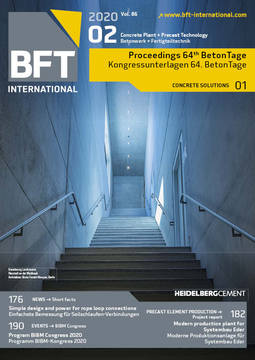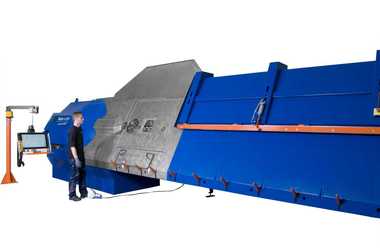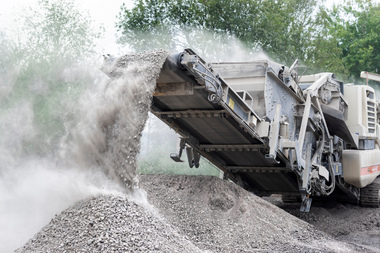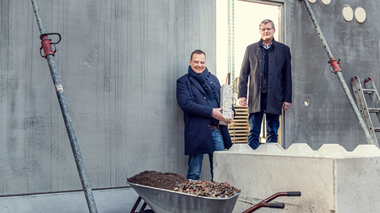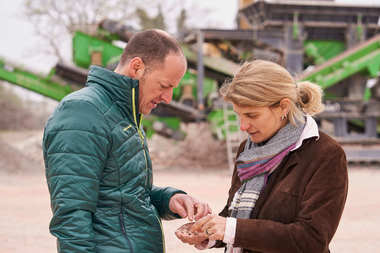Using recycled materials in the concrete products industry in line with applicable standards
Approvals for the new development of raw materials operations are rarely, if at all, obtained, and difficult and lengthy approval procedures have to be allowed for the extension of existing operations. Apart from resource efficiency, which is a fundamental requirement, it is therefore all the more important to also explore other, additional avenues in the supply of raw materials and, accompanying these measures, to (further) promote the use of secondary raw materials. However, in order to obtain qualities that are comparable to those of primary raw materials and fully comply with the applicable standards, additional requirements are placed on the recycling process especially with regard to, for example, cleaning and sorting.
It is important here to appeal (even) more strongly to the awareness of building contractors so that quality control starts, whenever possible and to the greatest possible extent, as early as on the building site in that excavation soils containing sand, gravel or rock are separated from other materials (such as backfills containing demolition waste) during removal, or in that buildings are gutted in a clean, effective operation during demolition and, wherever possible, concrete and other materials such as brickwork and masonry are separated at this early stage. The subsequent processing steps are decided on at the processing plant based on material properties and composition. In the case of sandy soils, for example, it may be sufficient to screen the material in order to obtain a suitable aggregate. Soils containing loam and gravel usually require washing in order to remove the loamy deposits from the material before it is crushed and graded into the different fractions. In the case of demolition waste and concrete, further materials are sorted during processing, for example, lightweight materials such as timber or cables (by means of, in part, manual picking and via air classifiers) and reinforcing steel (by means of different types of magnets (overband magnet, magnetic drum)). Depending on the type of material, additional processing and cleaning steps may become necessary (e.g. jig).
European standard DIN EN 12620:2008-7 defines the properties of aggregates obtained by processing natural, industrially manufactured or recycled materials and mixtures thereof for use as concrete aggregate. It is complemented by standards DIN 4226-101:2017-08 and DIN 4226-102:2017-08 for recycled aggregates.


